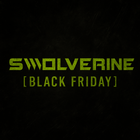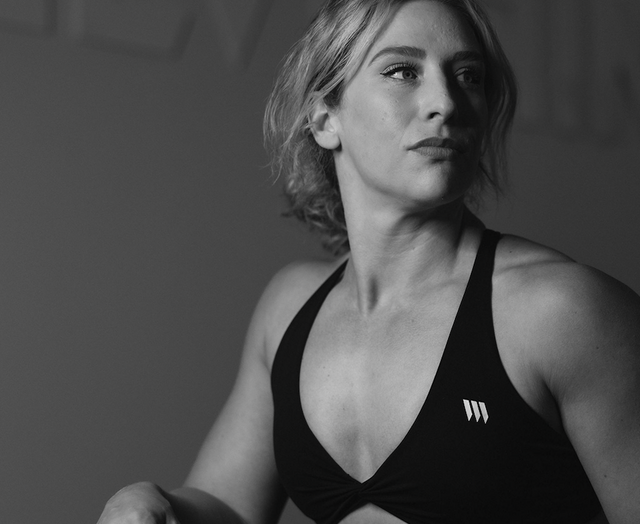BPC-157 has exploded in popularity thanks to its impressive regenerative potential—helping with everything from tendon repair to gut healing. But like any peptide, your results hinge on how much you take, how often, and for how long. Miscalculate your dosage, and you could waste product, delay recovery, or experience diminished effects.
Whether you’re using injectable or oral forms of BPC-157, it’s crucial to tailor your dose to your specific goal—be it healing a muscle tear, accelerating post-surgery recovery, or repairing gut lining.
“Most users start with a generic dose without considering delivery method, injury severity, or stacking strategy. A precision approach yields far better results.”
In this guide, we’ll break down:
-
The ideal BPC-157 dosage ranges based on your form and purpose
-
How to inject or take BPC-157 properly
-
How long to run a cycle
-
And the biggest mistakes to avoid when dosing this healing peptide
If you’re new to BPC-157, you may also want to check out our ultimate cycle guide or complete peptide overview before getting started.
How BPC-157 Works in the Body
To understand why dosage matters, you first need to understand how BPC-157 interacts with your body. BPC-157 is a synthetic peptide derived from a protective compound found in human gastric juice. Its primary mechanisms of action center on tissue regeneration, anti-inflammatory signaling, and angiogenesis—the formation of new blood vessels.
Key Mechanisms That Influence Dosing
-
Angiogenesis and Vascular Repair:
BPC-157 promotes new capillary formation at injury sites, enhancing oxygen and nutrient delivery. This is why localized injections near the injury site are often more effective than general subcutaneous use.
“BPC-157 has been shown to promote angiogenesis by upregulating VEGFR2 and eNOS activity, accelerating the healing of tendon and muscle injuries.”
— Gwyer, D. et al. Journal of Applied Physiology, 2019
-
Collagen and Fibroblast Modulation:
It upregulates fibroblast activity, supporting tendon and ligament remodeling—which makes it especially useful for athletes and post-op patients.
“Animal models demonstrate increased fibroblast density and type I collagen expression in BPC-157-treated groups compared to controls.”
— Sikiric, P. et al. Current Pharmaceutical Design, 2020
-
Cytoprotective Effects on the Gut:
Orally administered BPC-157 has shown promise in protecting the mucosal lining of the stomach and intestines, though oral bioavailability is debated. This delivery method informs lower-dose but more frequent protocols for gastrointestinal use.
“BPC-157 exhibits stable protection of gastric mucosa in various injury models, even when administered orally.”
— Drmic, D. et al. Pharmacological Reports, 2018
-
Neurological and NO Pathway Regulation:
Emerging data suggests that BPC-157 may modulate nitric oxide (NO) and dopamine systems, which could explain its potential for nerve regeneration and mood regulation—though lower doses may be more appropriate for systemic neurological use.
“The peptide affects dopamine and serotonin systems, offering neuroprotective and behavioral benefits in preclinical studies.”
— Perovic, D. et al. Molecules, 2020
Unlike many peptides, BPC-157 exhibits systemic effects even when injected locally, making it uniquely versatile—but also requiring careful consideration of delivery method and dosage.
For more on administration methods and what form is right for you, read our guide: Best Forms of BPC‑157: Injectable vs Oral vs Capsules.
Standard BPC-157 Dosage Ranges (By Form)
When it comes to BPC-157, how much you take depends heavily on the form you’re using—injectable or oral—and the intended target tissue. While human clinical data is limited, years of anecdotal use and animal studies have helped shape reliable dosing practices.
Injectable BPC-157 Dosage
Most users opt for injectable BPC-157 due to its superior bioavailability and localized healing potential. Typical daily doses fall between 200mcg and 1,000mcg, with 500mcg per day being the most commonly reported effective dose.
-
Subcutaneous (SubQ):
Injected under the skin, usually around the abdominal area or near the injury site for localized effect. -
Intramuscular (IM):
Less common but sometimes used for deep tissue or joint injuries. Always inject close to the affected area for maximum benefit.
“Subcutaneous administration of BPC-157 promotes accelerated tendon healing and reduced inflammation compared to controls in multiple rodent models.”
— Sikiric, P. et al. Journal of Orthopaedic Research, 2015
Oral and Capsule Dosage
Although oral BPC-157 is debated due to potential breakdown in the digestive tract, it has shown unique benefits for gut-related issues such as ulcers, leaky gut, and IBS.
-
Common oral dosing: 250–500mcg taken 1–2x daily
-
Best taken on an empty stomach to enhance absorption
“BPC-157 remains active in gastric environments and has demonstrated consistent mucosal protection across multiple ulcer models.”
— Drmic, D. et al. Pharmacological Reports, 2018
While oral use may not be optimal for musculoskeletal repair, it remains a popular option for gastrointestinal recovery and chronic inflammatory conditions.
Curious which format is right for your goal? Check out our full breakdown: Best Forms of BPC‑157: Injectable vs Oral vs Capsules.
BPC-157 Dosage by Use Case
While general dosing ranges offer a solid starting point, optimizing BPC-157 usage means tailoring your dose to what you're trying to heal. Whether it’s a torn tendon, gut inflammation, or nerve damage, different tissues require different approaches in both dosage and delivery method.
For Tendon, Ligament, and Joint Injuries
This is where BPC-157 truly shines. It's commonly used by athletes recovering from soft tissue injuries like rotator cuff strains, ACL/MCL tears, and elbow or knee tendonitis.
-
Typical dosage: 250–500mcg once or twice daily
-
Administration: Subcutaneous or intramuscular injection near the injury site
-
Cycle length: 2–4 weeks for minor injuries; up to 6 weeks for post-op recovery
“BPC-157 accelerated healing of transected Achilles tendon and medial collateral ligament in rats without formation of scar tissue.”
— Sikiric, P. et al. Journal of Physiology–Pharmacology, 2009
Pairing with TB-500 or CJC-1295 may further enhance repair speed and reduce inflammation.
For Gut Health and GI Disorders
BPC-157 has been extensively studied for its gastroprotective properties, making it a unique option for treating ulcers, IBS, leaky gut, and even Crohn’s disease.
-
Typical dosage (oral or subQ): 250–500mcg 1–2x daily
-
Administration: Oral capsules or subcutaneous injection
-
Cycle length: 4–6 weeks depending on severity
“In studies on rats with induced ulcerative colitis, BPC-157 preserved gut lining integrity and improved inflammatory markers.”
— Drmic, D. et al. Pharmacological Reports, 2018
Anecdotal users often report improved digestion and reduced gut pain within 7–10 days of starting.
For Nerve Damage or Neurological Support
Though less common, BPC-157 may offer neuroprotective effects, especially in cases of peripheral nerve injury or neuroinflammation.
-
Typical dosage: 200–500mcg once daily
-
Administration: Subcutaneous, away from the injury site (for systemic circulation)
-
Cycle length: 4+ weeks; possibly longer depending on severity
“BPC-157 demonstrated the ability to restore function after sciatic nerve transection and protect neurons from NO system disruption.”
— Perovic, D. et al. Molecules, 2020
This may be beneficial for individuals with spinal nerve impingements, post-surgical nerve damage, or even post-concussion inflammation.
For Muscle Recovery and Post-Cycle Repair
Many users turn to BPC-157 as part of their recovery protocol after steroid cycles, or after heavy training loads.
-
Typical dosage: 250–750mcg per day
-
Administration: SubQ injection; not site-specific
-
Cycle length: 2–4 weeks
Although BPC-157 doesn’t increase hypertrophy directly, its role in reducing inflammation and speeding soft tissue repair makes it a staple in performance-based recovery stacks.
How Long Should You Take BPC-157?
Unlike anabolic steroids or certain growth peptides, BPC-157 doesn't require extended loading phases or complex cycling strategies. But duration still matters—especially if you're recovering from injury or using it to address chronic conditions like gut inflammation.
Typical Cycle Lengths
-
Mild to moderate injury (tendon, ligament, muscle):
2–4 weeks at 250–500mcg per day -
Severe or post-operative injuries:
4–6 weeks, sometimes extending to 8 weeks -
Gastrointestinal issues (ulcers, IBS):
4–6 weeks at 250–500mcg per day, oral or subQ -
Neurological repair or systemic inflammation:
4–6 weeks, systemic dosing recommended
For most users, results begin to show within the first 7–10 days, especially in soft tissue or gut repair cases. Longer-term use may be required for nerve recovery or more complex injuries.
“BPC-157 initiated significant healing responses in as little as 5 days in multiple rodent models, with continued tissue regeneration over a 4-week window.”
— Sikiric, P. et al. Current Pharmaceutical Design, 2020
Should You Taper Off BPC-157?
There’s currently no clinical requirement to taper BPC-157, as it doesn’t suppress endogenous hormone production or create dependency. However, users recovering from long-term or severe injuries may choose to reduce dosing gradually—for example:
-
Week 1–4: 500mcg/day
-
Week 5: 250mcg/day
-
Week 6: 250mcg every other day
This mild tapering strategy may help the body normalize while preserving healing momentum, especially when transitioning into maintenance supplements like collagen, MSM, or glutathione.
Injection Protocol: Where and How to Administer BPC-157
Administering BPC-157 correctly is just as important as choosing the right dose. Because it’s a peptide, it must be injected (or taken orally in specific cases) to preserve its structure and ensure it reaches target tissues. Most users opt for subcutaneous (SubQ) injections, while some may use intramuscular (IM) for more direct injury treatment.
Subcutaneous (SubQ) Injections
SubQ injections are delivered just under the skin, typically around the abdomen or upper thigh. This method is ideal for systemic circulation or when the injury is not localized.
-
Needle type: 29–31 gauge insulin syringe
-
Depth: 1/4 to 1/2 inch
-
Best for: Muscle soreness, systemic healing, gut support
For general recovery or post-cycle support, SubQ is the most convenient and well-tolerated option.
Intramuscular (IM) Injections
IM injections penetrate deeper into muscle tissue and are often used when targeting a specific joint, tendon, or ligament.
-
Needle type: 27–30 gauge
-
Depth: 1 inch (depending on location and body composition)
-
Best for: Tendon/ligament injuries, joint repair, post-surgical recovery
“Localized intramuscular injection of BPC-157 near injury sites significantly accelerated tendon regeneration in rat models.”
— Sikiric, P. et al. Journal of Physiology–Pharmacology, 2009
Always follow aseptic technique:
-
Clean the vial top and injection site with an alcohol pad
-
Use a new sterile syringe for each injection
-
Do not reuse needles
-
Rotate injection sites to minimize irritation
Oral Administration (When Appropriate)
Oral BPC-157 is used primarily for gut-related applications. While it’s less bioavailable for musculoskeletal recovery, it has shown significant protective effects in the GI tract.
“BPC-157 demonstrates effective gastroprotection when delivered orally in models of colitis and gastric ulceration.”
— Drmic, D. et al. Pharmacological Reports, 2018
For more on oral vs injectable use, read our breakdown: Best Forms of BPC‑157: Injectable vs Oral vs Capsules.
Stacking BPC-157 for Better Results
While BPC-157 is powerful on its own, many users experience even greater healing outcomes when stacking it with other recovery-focused peptides or supplements. Strategic stacking can improve collagen synthesis, inflammation control, and tissue regeneration, especially during high-stress training or post-injury rehab.
BPC-157 + TB-500: The Ultimate Healing Stack
This is the most common and widely praised combination. BPC-157 focuses on localized tissue repair, while TB-500 enhances systemic healing and cell migration.
-
Why stack it: BPC-157 heals specific sites; TB-500 promotes broader repair and flexibility
-
Dosing synergy:
-
BPC-157: 250–500mcg 1–2x daily (local injection)
-
TB-500: 2–5mg weekly (divided into 2–3 doses, SubQ or IM)
-
“TB-500 (thymosin beta-4) enhances angiogenesis and cellular differentiation, making it synergistic with BPC-157 in musculoskeletal recovery.”
— Goldstein, A. et al. Annals of the New York Academy of Sciences, 2012
For full comparison, see: TB-500 vs BPC 157: Unveiling the Ultimate Healing Peptides for Recovery and Performance
BPC-157 + CJC-1295 / Ipamorelin
Growth hormone secretagogues like CJC-1295 and Ipamorelin stimulate natural GH release, which supports tissue repair, fat metabolism, and sleep quality. When combined with BPC-157, they form a powerful regenerative protocol.
-
Why stack it: CJC/Ipa boosts overall recovery; BPC-157 handles targeted repair
-
Dosing synergy:
-
CJC-1295/Ipamorelin: 100–200mcg each, 1–2x daily
-
BPC-157: 250–500mcg daily, as needed
-
For detailed synergy: CJC-1295 vs Ipamorelin: Best Growth Peptide Combo?
BPC-157 + Recovery Supplements
Peptides work best when supported by a strong nutritional and antioxidant foundation. Consider stacking BPC-157 with:
-
Hydrolyzed collagen and BioCell® collagen – raw material for connective tissue repair
-
MSM and glucosamine – joint inflammation reduction
-
Setria® glutathione and Siliphos® milk thistle – cellular detox and liver support
-
Pomella® pomegranate and Bergavit® – vascular health and recovery
You can find many of these clinically validated ingredients in Swolverine’s recovery stack lineup.
Stacking BPC-157 isn’t necessary—but it can dramatically enhance your results if you’re navigating chronic injury, post-surgical healing, or aggressive training phases.
Common Mistakes to Avoid When Dosing BPC-157
Even though BPC-157 is relatively well-tolerated and easy to use, missteps in dosing or administration can undermine its effectiveness—or worse, delay your recovery. Here are the most common mistakes users make and how to avoid them.
Using Too Much Too Soon
Many first-time users assume that more is better—but with peptides, that’s rarely true. High doses don’t necessarily speed up healing and may waste product or desensitize receptors over time.
-
Start with 250–500mcg per day, evaluate results, and increase only if needed.
-
For gut or systemic use, lower, consistent doses often work better than aggressive cycling.
“BPC-157 demonstrates a bell-shaped dose-response curve in several models, meaning too high a dose may reduce therapeutic effects.”
— Sikiric, P. et al. Current Pharmaceutical Design, 2020
Injecting Far from the Injury Site (When Localized Healing Is Needed)
If you're recovering from a joint, tendon, or ligament injury, injecting into the abdomen won’t target the injured tissue as efficiently.
-
For soft tissue injuries, inject close to the injury site using a SubQ or IM method.
-
Systemic recovery (e.g. gut, nerve repair) is the exception—those cases benefit from non-localized dosing.
Being Inconsistent with Timing and Frequency
Peptides work best when taken consistently, as their short half-lives require regular administration to maintain stable therapeutic levels.
-
Skipping doses, altering times, or only dosing a few times per week can reduce results.
-
Set reminders or schedule injections around training or meals (for oral versions).
Overlooking Sterility and Injection Technique
Peptides are fragile and injectable—so poor injection practices can lead to contamination, reduced potency, or infection.
-
Always use new sterile needles, clean the vial top, and swab the injection site.
-
Don’t store reconstituted peptide vials for longer than instructed (typically 2–4 weeks refrigerated).
For more detailed injection tips, revisit our section on how to inject BPC-157 properly.
FAQs – Your Top BPC-157 Dosage Questions Answered
Still have questions? Here are answers to the most common dosage and protocol concerns people have when starting BPC-157.
What's the Best Time of Day to Inject BPC-157?
There’s no universally “best” time, but most users inject:
-
Once daily in the morning, or
-
Split into two doses: AM and PM for more stable coverage (especially for injury or gut repair)
For injury-specific cases, timing the dose post-workout or before sleep may support natural repair cycles.
Can I Take BPC-157 Orally and Still Get Results?
Yes—but it depends on your goal.
-
Oral BPC-157 is most effective for gut-related conditions like ulcers, IBS, and Crohn’s.
-
For muscle, tendon, ligament, or nerve repair, injectable forms are significantly more effective due to bioavailability and delivery route.
“BPC-157 administered orally protected GI mucosa, but injectable routes were superior for soft tissue healing in vivo.”
— Drmic, D. et al. Pharmacological Reports, 2018
For more detail, read Best Forms of BPC‑157: Injectable vs Oral vs Capsules Explained.
Should I Load or Taper BPC-157?
No loading or tapering is required for most protocols.
-
Start with a moderate, consistent dose (e.g. 500mcg/day).
-
Tapering may be helpful if using long term (6+ weeks), but isn’t physiologically necessary.
Can Women Use the Same Dosage as Men?
Yes. BPC-157 is non-hormonal and bodyweight-independent, so typical dosages apply to both men and women.
That said, smaller individuals may do well with lower daily doses (e.g. 250mcg/day), especially for gut healing or mild injuries.
Can I Stack BPC-157 With Other Peptides or Supplements?
Absolutely. Common stacks include:
-
TB-500 for systemic soft tissue repair
-
CJC-1295 + Ipamorelin for GH support
-
Glutathione, collagen, MSM for antioxidant and structural support
Explore more in our guide: The Best Peptides for Recovery
What Happens If I Miss a Dose?
Missing a day occasionally won’t ruin your progress—but consistency matters. If you skip:
-
Just resume your normal schedule the next day
-
Don’t double-dose or "make up" missed injections
Conclusion – Finding the Right Dosage for You
BPC-157 is one of the most versatile healing peptides available—but like any powerful tool, its effectiveness depends on how you use it. From tendon injuries to gut repair, the right dosage and delivery method can accelerate recovery, reduce inflammation, and support long-term resilience.
Here’s a quick recap:
-
Typical daily dose: 250–500mcg for most users
-
Inject near the injury for best results in soft tissue repair
-
Oral dosing is best reserved for gut-related issues
-
Cycle duration usually runs 2–6 weeks, depending on severity
-
Stacking with TB-500, CJC-1295, and recovery-focused supplements can enhance outcomes
If you're new to peptides or want to explore how BPC-157 fits into a complete protocol, start with the foundational guide:
→ Unlocking Recovery: The Ultimate Guide to a BPC-157 Cycle for Joint and Muscle Repair
Still deciding between oral and injectable?
→ Best Forms of BPC-157: Injectable vs Oral vs Capsules Explained
As always, consult with a medical professional before beginning any peptide regimen—especially if you’re managing a serious injury, stacking compounds, or navigating long-term health conditions. Dosage is just one piece of the puzzle—but it’s the piece that determines whether BPC-157 works for you or not.







